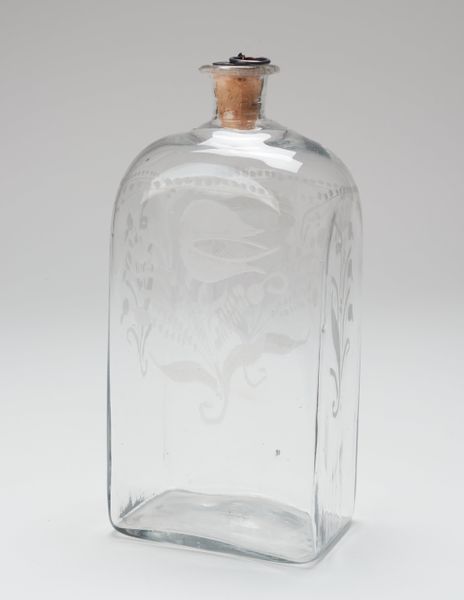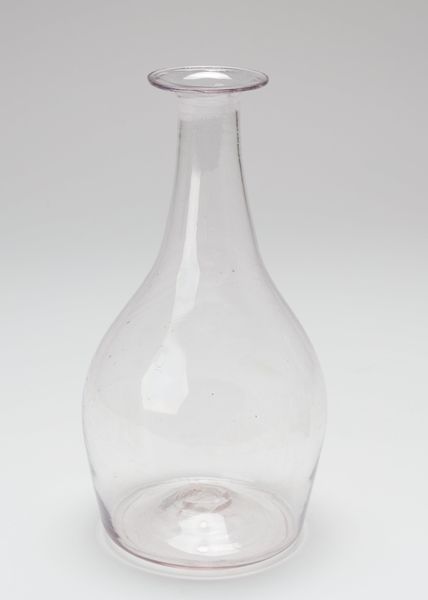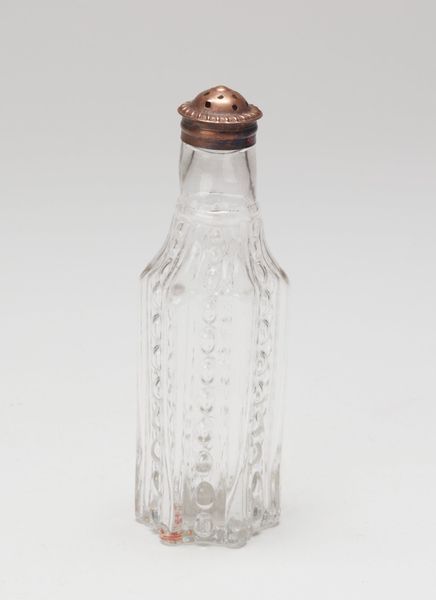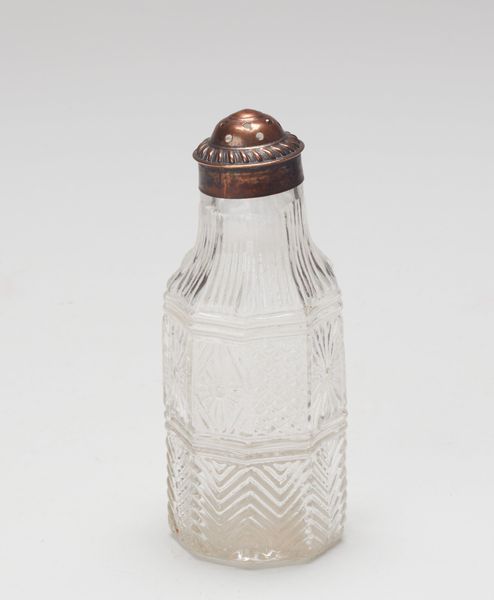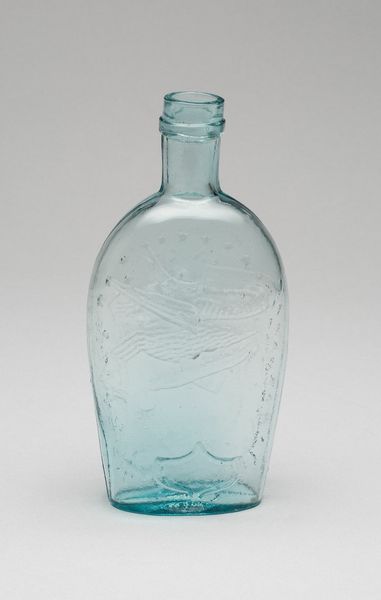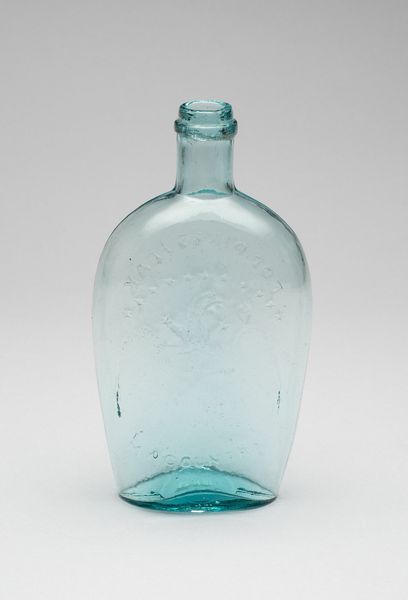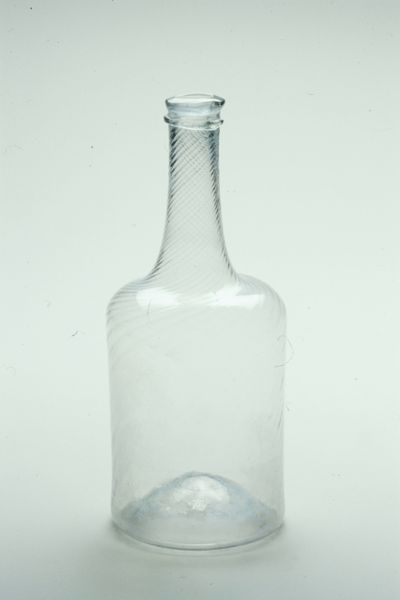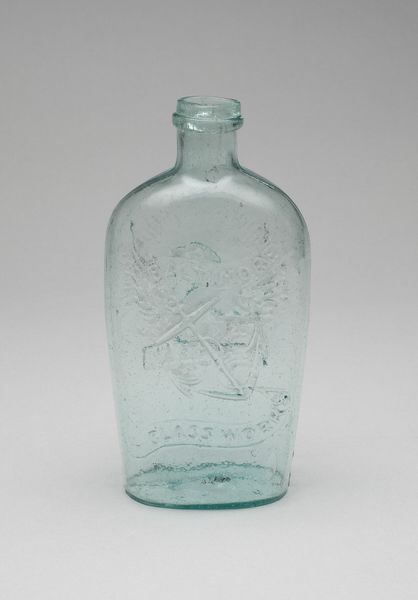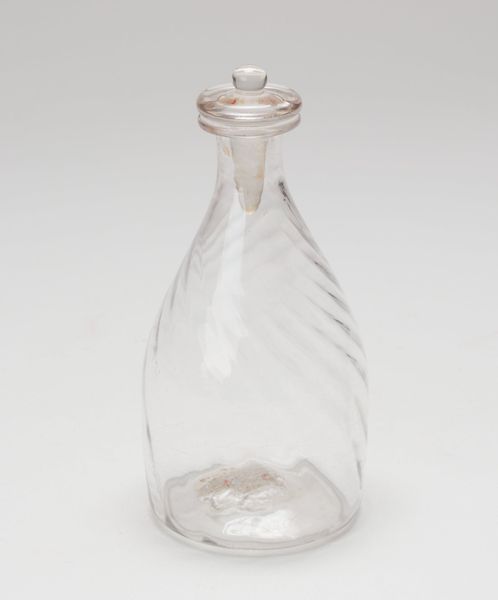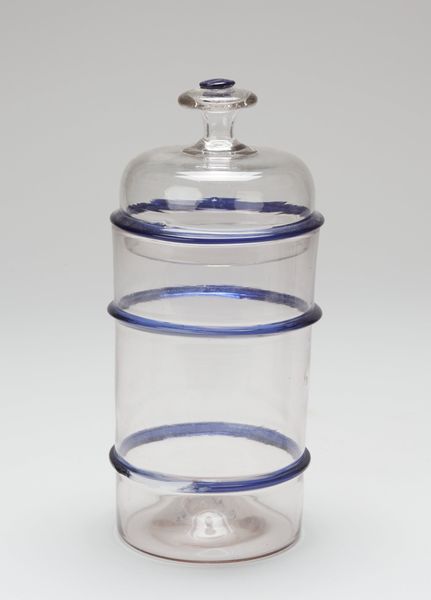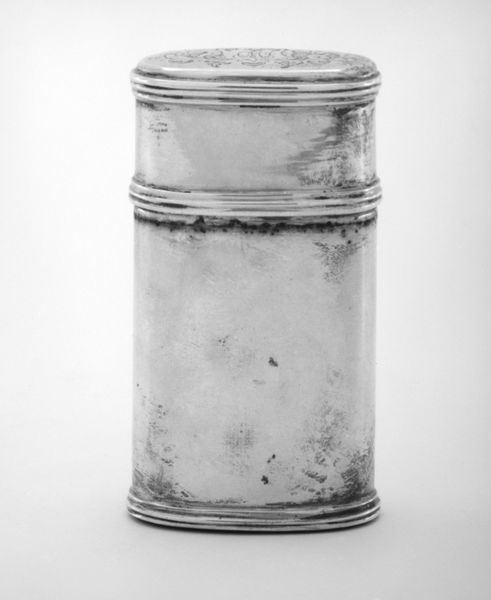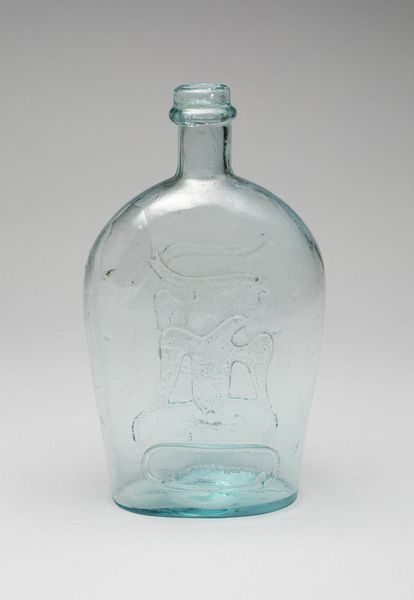
-Half-Pint Coin Bank- still bank c. 20th century
0:00
0:00
mixed-media, collage, found-object, paper, glass
#
mixed-media
#
collage
#
found-object
#
paper
#
glass
#
pop-art
#
united-states
#
decorative-art
Dimensions: 4 1/2 x 2 5/16 x 2 5/16 in. (11.43 x 5.87 x 5.87 cm)
Copyright: No Known Copyright
Curator: This object before us, dating to the 20th century, is a captivating example of pop and decorative art—a “Half-Pint Coin Bank” created by the Bower Manufacturing Co. Editor: It's so unassuming. Something about its compact scale and the clear glass gives it a kind of quiet nostalgia. Curator: It is an assemblage piece using mixed media, specifically a glass milk bottle turned into a coin bank. The addition of paper collage elements truly transform its purpose. It invites us to think about the commodification of childhood innocence and financial literacy taught by cultural means. Editor: The metal cap is held on by what appears to be an elastic band. That is just brilliant, to repurpose a everyday form like a milk bottle and render the whole piece as a symbol of childhood economics. Considering the means of production, this was most likely an outsourced manufacture rather than unique individual object. What are your thoughts about that? Curator: Indeed, the bank is indicative of the period’s consumer culture; such items helped embed economic values within the everyday lives of children through toys and practical forms, fostering the relationship between play, spending, and banking at an early age. Editor: Right, mass-produced for the masses, as an industrial gesture that elevates disposable culture into art and blurs boundaries between art and functional item. I imagine its creator viewed their labor simply as "craft," though its significance to art history today is remarkable. Curator: Thinking of mass production helps clarify how such banks promoted specific social ideas concerning value, childhood and money within society at that time. Editor: Absolutely, seeing the glass and applied images tells a broader history regarding consumerism and societal ideas relating economic upbringing—how this period formed a culture we are now. The ingenuity in simple form gives the object significant appeal today. Curator: A great summary that considers the implications this object holds. Editor: Agreed, there is value in even these smaller things—every material aspect can enrich our knowledge and open discourse on larger contexts within history and our existence today.
Comments
No comments
Be the first to comment and join the conversation on the ultimate creative platform.
